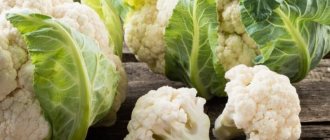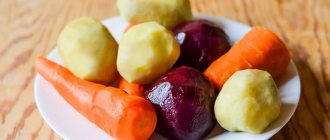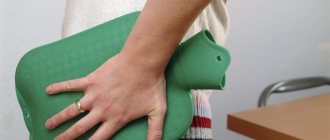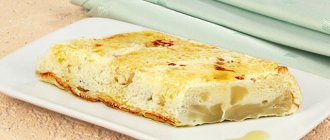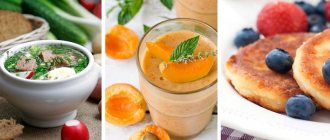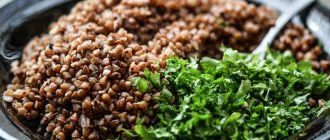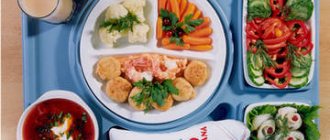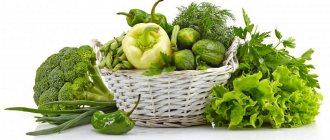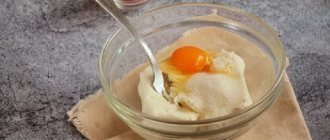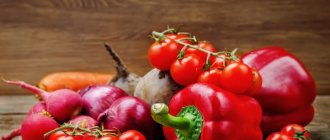04/19/2019 Article
- Diet "Table No. 7"
- Diet “Table No. 7a”
- Diet “Table No. 7b”
In medical-prophylactic and sanatorium-resort institutions, they use the traditional numbered system of diets by M. I. Pevzner for nutrition for certain diseases. The “7 table” diet is indicated for kidney diseases, such as acute and chronic nephritis (pyelonephritis, glomerulonephritis).
Diet No. 7, complete in energy value, is limited in the consumption of free liquid, salt (sodium chloride) and all substances that irritate the kidneys, stimulate the cardiovascular and central nervous systems, meat, dairy and mushroom broths, foods rich in essential oils and oxalic acid.
Depending on the severity and specifics of the condition, there are variations of this diet.
General rules
As you know, a therapeutic diet is prescribed for various diseases and is a prerequisite for their treatment. Nephritis is a group of kidney diseases of an inflammatory (or autoimmune) nature. This includes glomerulonephritis (the process involves the glomeruli of the kidneys), interstitial nephritis (or tubulointerstitial nephritis - the pathological process affects the interstitial tissue of the kidney), pyelonephritis (inflammation of the pelvis and calyx of the kidney). All of these diseases can be acute or occur in a chronic form, which more often causes renal failure .
Table diet number 7 according to Pevzner is designed for patients with kidney disease in the recovery stage - usually 3 weeks after an acute illness and discharge from the hospital. The diet has several varieties, which are prescribed at different stages of the disease (exacerbation, subacute course or persistent remission) and taking into account renal function (absence or presence of renal failure). With these diseases, the kidneys are affected to varying degrees and their function is impaired, and the severity of symptoms also differs. These are increased pressure, frequent urination, changes in urine ( red blood cells , casts, protein) and edema syndrome. All this is taken into account when prescribing different types of diet.
Basic Diet 7 table provides moderate sparing of the kidneys, nutrition is aimed at reducing edema and blood pressure . In addition, it helps improve the excretion of nitrogenous metabolic products from the body. It is distinguished by the restriction of proteins, and fats and carbohydrates are contained within the physiological norm. The daily calorie content of this diet is 2700-2900 kcal. The patient is allowed 80 g of proteins per day (mainly from dairy products), 90-100 g of fats and 400-450 g of carbohydrates (in terms of sugar - 80-90 g). Food is prepared without salt.
Thus, Diet No. 7 for kidney disease has the following features:
- Limitation of salt - food is prepared without salt, but it is allowed to consume a certain amount of it (3-6 g per day) - this depends on the severity of the disease and the severity of renal failure and is provided for in the varieties of the main table. For example, in acute nephritis it is completely excluded, and in chronic tubulointerstitial nephritis in remission and without impaired renal function, up to 7-8 g per day is allowed and only in the presence of arterial hypertension makes it necessary to reduce it to 5 g.
- 80 g of protein is allowed. Milk proteins and egg whites (more easily digestible) are preferred over meat or fish. Plant proteins have less nutritional value than animal proteins.
- When preparing all dishes, meat and fish (they are allowed in quantities of 150 g) are first boiled and then baked, stewed or fried. This technological technique significantly reduces the amount of extractive substances in the finished dish.
- Avoid foods rich in essential oils (celery, fresh dill, parsley, basil, garlic and fresh onions) and sources of oxalic acid (spinach and sorrel).
- In case of kidney disease, the amount of fluid consumed is limited - from 0.9 to 1.1 liters. More accurately, it is calculated by the amount of urine excreted over the past day and should not exceed diuresis by 300–400 ml. In end-stage renal failure, fluid is significantly limited to 0.7-0.8 liters.
- Products that have a diuretic effect are required: pumpkin, cucumbers, zucchini, beets, green salads, fresh apricots, raisins, dried apricots, apricots, prunes, watermelon and melon.
- 5 meals a day are provided.
- The daily diet should not exceed 3 kg by weight.
- Mandatory inclusion of vitamins A , C , B1 , B12 , K .
- Any alcoholic drinks, strong tea and coffee, cocoa, chocolate, spicy and salty snacks that irritate the kidneys are excluded.
- The intake of sodium mineral waters is prohibited.
Diet
To provide the patient with adequate nutrition without interfering with recovery, the menu includes:
- fermented milk products, cottage cheese, sour cream, milk, cream (all low fat);
- bread made from bran flour or wheat, without salt;
- cabbage, cucumbers, carrots, potatoes, lettuce, other vegetables except those prohibited;
- various cereals and pasta of any kind;
- any eggs: up to 2 whites per day and half a yolk;
- low-fat fish: pike perch, navaga, perch, pike, hake, carp and others;
- lean fillet: rabbit, chicken, veal, turkey, beef;
- berries and dried fruits;
- honey, jam, jam, marmalade, sugar, jelly, lollipops;
- cinnamon, vanillin, citric acid, refined oil, vinegar;
- weak teas and coffee, juices, decoctions of berries and herbs.
For a diet menu, you must include first courses once a day. Soups should be based on vegetables, without fatty broth, with the addition of cereals or noodles. No salt is used. It is useful to eat dried apricots, apples, raisins, and black currants. Among the acceptable components there is everything necessary for a complete and varied menu.
It is prohibited to use for dishes:
- flour with salt, including regular bread;
- mushroom broths, fish soup, rich decoctions of meat;
- cocoa and chocolate;
- strong tea, alcohol, sparkling water;
- marinades, smoked meats and pickles;
- sausage, canned food, salted fish;
- any cheeses and too fatty dairy products;
- hot and salty spices and herbs;
- sorrel, spinach, rhubarb, any beans;
- mushrooms, radishes, garlic, radishes;
- onions (can only be prepared);
- fat: fish, beef, lamb, pork.
Gradually, under the supervision of a doctor, the patient will be added one prohibited product at a time to return him to a normal diet. Violating the diet rules can significantly slow down the healing process. It is important to strictly comply with all requirements so as not to aggravate the pathological process.
Varieties
Treatment Table No. 7A is prescribed for nephritis with severe renal failure. This is a completely salt-free, plant-based diet with a significant protein limit of up to 20 g.
The amount of fluid you drink depends on your urine output in the previous day. It is usually prescribed for 20 days. When the acute process subsides and azotemia Diet 7B is recommended , in which, compared to the previous one, the amount of protein (40 g) and liquid 1-1.2 liters is doubled. It is seen as a transition to Diet No. 7.
Table 7B is recommended for nephrotic syndrome (edema, loss of protein in the urine) and is aimed at replenishing protein, so its daily content in the diet reaches 125 g. Liquid (0.8 l) and salt are significantly limited.
Table 7G is indicated for patients on hemodialysis when they have renal failure . The therapeutic diet is characterized by a protein content of up to 60 g, 2-3 g of salt and 0.7 liters of liquid are allowed.
Diet number 7, table number 7B
Indications for diet 7B
- nephrotic syndrome accompanying kidney disease
- nephrotic syndrome accompanying diseases and pathological conditions of other organs and systems
Purpose of table assignment
- replenishment of protein lost in urine
- normalization of protein and lipid metabolism
- reduction of edema
Table characteristics
The amount of protein is increased, the amount of fat is moderately reduced (from animals), the content of carbohydrates is normal, but sugar is limited. Table salt and extractive substances, the volume of liquid drunk, oxalic acid, cholesterol, and sugar are sharply limited. The amount of lipotropic substances increases.
Read also: Diet number 2: nutritious nutrition with restrictions
Culinary processing: usual, does not involve mechanical sparing. Meat and fish are boiled. Cooking - without table salt. The temperature of the food is unremarkable.
Frequency of meals: 5-6 times a day.
Daily caloric intake: 2600 - 2800 kcal
Chemical components:
- proteins - from 110 to 120 grams (60-65% - animals)
- fats - from 70 to 90 grams (25-30% - vegetable)
- carbohydrates - from 350 to 450 grams (35-45 grams of sugar)
- sodium chloride (table salt) - from 2 to 5 grams (given to the patient for adding salt to prepared dishes)
- free liquid volume - up to 800 ml
Authorized Products
The dietary table provides for limiting salt, so the patient should eat only home-baked salt-free bread, pancakes or pancakes also without salt. All food is prepared without salt, but it is allowed to add salt to ready-made dishes, using 3-5 g per day.
Soups are prepared in vegetable broth with the addition of vegetables, cereals, and vermicelli. Borscht, cabbage soup and beetroot soup are allowed. Season them with sour cream, butter, dill, parsley, caraway seeds, and, if desired, citric acid. Onions can be added to first courses after preliminary boiling and sautéing.
Main courses are prepared from lean meat (chicken, beef, lamb, turkey, tongue). It must be remembered that all meat and fish products must first be boiled, and then, if you want to get a crust, lightly fried or baked.
Therefore, it is better to serve all protein dishes in pieces, and from boiled minced meat you can make cabbage rolls, stuffed vegetables, and pancakes with meat. The fish is also chosen to be low-fat, boiled in pieces and baked if desired; you can prepare a jellied dish from it. You can use sauces in dishes: tomato, sour cream, milk, any vegetable, onion (from boiled and sauteed onions), sweet gravy. Allowed dried herbs are added to them.
All cereals and pasta can be used as a side dish and in soups. Porridge is boiled in water, cereals are used to make puddings and cutlets with the addition of vegetables. Allowed are casseroles with noodles (pasta) and cottage cheese, fruit pilaf, cereals and pasta with the addition of prunes, dried apricots, raisins and jam.
The following dairy products are allowed: milk, cream, curdled milk, yogurt, cottage cheese and dishes made from it with apples, carrots and rice. Sour cream is added to dishes in limited quantities. 2 eggs per day are allowed, provided that proteins (cottage cheese, meat and fish) are reduced. Eggs are added to dishes, made into an omelet or soft-boiled.
Many vegetables are allowed (except radishes, radishes, celery, garlic, fresh onions). They can be boiled, stewed, added to casseroles and made into vegetable cutlets, salads from boiled and fresh vegetables and boiled meat. Do not add onions, sauerkraut and pickles. You can add cumin and dried dill to stewed vegetables.
All ripe fruits and berries are allowed in fresh and processed form: puree, jelly, jelly, baked, compotes, jam. You can add cinnamon to desserts. Candies (except chocolate), honey and fruit ice cream are also allowed as desserts. Drinks include any juices, weak coffee, tea with lemon, rosehip infusion.
Table of permitted products
| Proteins, g | Fats, g | Carbohydrates, g | Calories, kcal | |
Vegetables and greens | ||||
| zucchini | 0,6 | 0,3 | 4,6 | 24 |
| cauliflower | 2,5 | 0,3 | 5,4 | 30 |
| potato | 2,0 | 0,4 | 18,1 | 80 |
| carrot | 1,3 | 0,1 | 6,9 | 32 |
| beet | 1,5 | 0,1 | 8,8 | 40 |
| tomatoes | 0,6 | 0,2 | 4,2 | 20 |
| pumpkin | 1,3 | 0,3 | 7,7 | 28 |
Fruits | ||||
| apricots | 0,9 | 0,1 | 10,8 | 41 |
| watermelon | 0,6 | 0,1 | 5,8 | 25 |
| bananas | 1,5 | 0,2 | 21,8 | 95 |
| melon | 0,6 | 0,3 | 7,4 | 33 |
| figs | 0,7 | 0,2 | 13,7 | 49 |
| nectarine | 0,9 | 0,2 | 11,8 | 48 |
| peaches | 0,9 | 0,1 | 11,3 | 46 |
| apples | 0,4 | 0,4 | 9,8 | 47 |
Berries | ||||
| strawberry | 0,8 | 0,4 | 7,5 | 41 |
Nuts and dried fruits | ||||
| raisin | 2,9 | 0,6 | 66,0 | 264 |
| dried apricots | 5,2 | 0,3 | 51,0 | 215 |
| dried apricots | 5,0 | 0,4 | 50,6 | 213 |
| dates | 2,5 | 0,5 | 69,2 | 274 |
Cereals and porridges | ||||
| buckwheat (kernel) | 12,6 | 3,3 | 62,1 | 313 |
| semolina | 10,3 | 1,0 | 73,3 | 328 |
| cereals | 11,9 | 7,2 | 69,3 | 366 |
| corn grits | 8,3 | 1,2 | 75,0 | 337 |
| pearl barley | 9,3 | 1,1 | 73,7 | 320 |
| millet cereal | 11,5 | 3,3 | 69,3 | 348 |
| white rice | 6,7 | 0,7 | 78,9 | 344 |
Confectionery | ||||
| jam | 0,3 | 0,2 | 63,0 | 263 |
| jelly | 2,7 | 0,0 | 17,9 | 79 |
| milk candies | 2,7 | 4,3 | 82,3 | 364 |
| fondant candies | 2,2 | 4,6 | 83,6 | 369 |
| paste | 0,5 | 0,0 | 80,8 | 310 |
Raw materials and seasonings | ||||
| cinnamon | 3,9 | 3,2 | 79,8 | 261 |
| honey | 0,8 | 0,0 | 81,5 | 329 |
| dried parsley | 22,4 | 4,4 | 21,2 | 276 |
| sugar | 0,0 | 0,0 | 99,7 | 398 |
| milk sauce | 2,0 | 7,1 | 5,2 | 84 |
| sour cream sauce | 1,9 | 5,7 | 5,2 | 78 |
| tomato sauce | 1,7 | 7,8 | 4,5 | 80 |
| caraway | 19,8 | 14,6 | 11,9 | 333 |
| dried dill | 2,5 | 0,5 | 6,3 | 40 |
Dairy | ||||
| milk | 3,2 | 3,6 | 4,8 | 64 |
| kefir | 3,4 | 2,0 | 4,7 | 51 |
| cream | 2,8 | 20,0 | 3,7 | 205 |
| sour cream | 2,8 | 20,0 | 3,2 | 206 |
| curdled milk | 2,9 | 2,5 | 4,1 | 53 |
| acidophilus | 2,8 | 3,2 | 3,8 | 57 |
| yogurt | 4,3 | 2,0 | 6,2 | 60 |
Cheeses and cottage cheese | ||||
| cottage cheese | 17,2 | 5,0 | 1,8 | 121 |
Meat products | ||||
| boiled beef | 25,8 | 16,8 | 0,0 | 254 |
| boiled beef tongue | 23,9 | 15,0 | 0,0 | 231 |
| boiled veal | 30,7 | 0,9 | 0,0 | 131 |
| rabbit | 21,0 | 8,0 | 0,0 | 156 |
Bird | ||||
| boiled chicken | 25,2 | 7,4 | 0,0 | 170 |
| turkey | 19,2 | 0,7 | 0,0 | 84 |
Eggs | ||||
| chicken eggs | 12,7 | 10,9 | 0,7 | 157 |
Oils and fats | ||||
| peasant unsalted butter | 1,0 | 72,5 | 1,4 | 662 |
| corn oil | 0,0 | 99,9 | 0,0 | 899 |
| olive oil | 0,0 | 99,8 | 0,0 | 898 |
| sunflower oil | 0,0 | 99,9 | 0,0 | 899 |
| ghee | 0,2 | 99,0 | 0,0 | 892 |
Non-alcoholic drinks | ||||
| mineral water | 0,0 | 0,0 | 0,0 | — |
| coffee with milk and sugar | 0,7 | 1,0 | 11,2 | 58 |
| black tea with milk and sugar | 0,7 | 0,8 | 8,2 | 43 |
Juices and compotes | ||||
| apricot juice | 0,9 | 0,1 | 9,0 | 38 |
| carrot juice | 1,1 | 0,1 | 6,4 | 28 |
| pumpkin juice | 0,0 | 0,0 | 9,0 | 38 |
| * data is per 100 g of product | ||||
Menu for the week
Food departments in specialized hospitals post a treatment menu for the entire week; patients can use this for home use. The weekly diet menu No. 7 for adults does not require any special financial costs or skills.
Modern cooking and the availability of many products make it possible to create nutritious, beautiful dishes. Many patients note that they do not experience any discomfort in the transition to a new diet, except for the lack of salt. They also get used to the salt-free regime quickly. Below is the menu list.
Day 1
Morning: boiled buckwheat porridge with milk, black tea with lemon, bread.
Lunch: soft-boiled egg and tomato salad with sour cream, lean vegetable soup, steamed chicken cutlets, dried apricot compote. By the way, we suggest reading about all the beneficial properties of eggs.
Afternoon snack: pumpkin juice, biscuits, raisins.
Evening: fruit pudding, green tea, stewed white cabbage.
Day II
Morning: casserole with jam, baked apple, green tea.
Lunch: vinaigrette without sauerkraut, borscht in a weak meat broth with sour cream, mashed potatoes, zrazy.
Afternoon snack: carrot-apple juice with cream.
Evening: mashed potatoes, salmon steak.
III day
Morning: boiled oatmeal with apples, rosehip decoction.
Lunch: rice soup with chicken leg, buckwheat, viburnum berry decoction.
Afternoon snack: zucchini casserole, tangerines.
Evening: beet salad with prunes and walnuts, vegetables in a pot, thick berry jelly.
IV day
Morning: oatmeal with raspberries, lean cookies, green tea.
Lunch: creamy pumpkin soup with celery, croutons, Caesar salad with chicken breast.
Afternoon snack: a glass of kefir, dried bread with butter.
Evening: stewed cod with vegetables, cream sauce, rosehip infusion.
V day
Morning: rice porridge with jam, boiled beets, black tea with sugar and lemon.
Lunch: homemade noodle soup with chicken broth, tomato salad with sour cream, bread.
Afternoon snack: thick pumpkin juice, gingerbread.
Evening: zucchini casserole with minced chicken, black tea. See all quick zucchini recipes.
VI day
Morning: steam omelette with tomatoes, green tea, toast.
Lunch: chicken broth with crackers, fresh cabbage salad with herbs, jelly. Some options for diet salad recipes.
Afternoon snack: thick yogurt without additives, dyes, cookies.
Evening: vinaigrette, boiled chicken breast, jelly. We offer 5 step-by-step recipes for preparing dietary chicken breast.
VII day
Morning: milk noodles, black tea with milk.
Lunch: rice soup, mashed potatoes with fish balls, bread.
Afternoon snack: pancakes with jam, black tea.
Evening: cottage cheese casserole, boiled rice, black tea with lemon.
You can create a menu yourself, but for the first time you can seek help from a nutritionist. Today there are summary tables that allow you to control your daily caloric intake, protein, carbohydrate and fat content.
Important! The daily meal in the sample menu can be divided into 5-6 times and eaten in small portions. This will significantly save time in the kitchen and diversify the menu. In addition, the products and dishes given in the example are perfectly stored for up to 3 days; they can be prepared for future use and alternated with each other.
During pregnancy and lactation
During pregnancy, proper nutrition is an important step. With chronic renal failure, as well as with kidney diseases of inflammatory origin, it is necessary to be more strict about the rules of food discipline. Read more about the diet for pregnant women.
It is important to make the following adjustments and enrich the diet for pregnant women:
- fresh fruits, vegetables (as well as steamed and boiled);
- white poultry, low-fat meat-based broths;
- fermented milk and dairy products.
The dietary table must be balanced and include all useful components. Snacking on the run, consumption of fresh baked goods, and confectionery products are not allowed. Restrictions help reduce the burden on the body during pregnancy. At the same time, daily fluid and salt are limited. It is impossible to completely eliminate sodium from the body. So, the volume of daily liquid should not be less than 0.7-0.8 liters per day, and the volume of salt should not be less than 3 g.
The lactation period has one peculiarity. If the acute phase of the inflammatory process occurs during breastfeeding, then at the time of treatment with antibacterial drugs, weaning from the breast or switching to artificial adapted formulas is recommended. Antibiotics and uroantiseptics can negatively affect the baby's health. Medical care for pregnant women necessarily includes recommendations for a healthy diet.
Sample menu for 3 days
Day 1
Morning: boiled egg, warm green tea with lemon.
2nd breakfast: oatmeal porridge with milk, rosehip decoction.
Lunch: pumpkin soup with cream, steam cutlet and grilled vegetables. A selection of delicious recipes for pumpkin puree soups.
Dinner: boiled buckwheat, kefir.
Day II
Morning: rice porridge with milk, jelly.
2nd breakfast: fruit salad, dressed with yogurt, apple juice.
Lunch: chicken broth with croutons, beetroot salad with prunes.
Dinner: vegetable casserole with chicken breast, jelly. Read recipes for delicious diet chicken breast in the oven.
III day
Morning: milk soup, biscuits, black tea with lemon and sugar.
2nd breakfast: cottage cheese casserole. If you have a multicooker, then we offer recipes for airy cottage cheese casserole with photos.
Lunch: vegetable broth with chicken breast, croutons, tomato salad with sour cream and green onions.
Afternoon snack: baked apple with honey, chamomile infusion.
Evening: steamed cod or tuna cutlets with creamy caviar sauce, rice with vegetables, tea.
During pregnancy against the background of chronic renal failure, it is important to maintain a normal weight, so it is better to avoid overeating, move more, and drink fluids half an hour after eating. A single serving should not exceed 300 g; for this it is better to purchase small dishes. Between meals, it is recommended to eat seasonal fruits and berries.
For children
Kitchen for children with chronic renal failure food does not imply any special restrictions for a number of reasons:
- the need for the development of organs and systems;
- building up bone, cartilage and connective tissue;
- normal physical and mental development;
- adequate immunity.
For children under 5 years of age, there is no point in introducing serious restrictions on sodium, phosphorus, potassium, as well as fermented milk and dairy products. The main principle is the development and weight gain of the child for future replacement therapy. Over time, you can introduce restrictions on sweets, salt, and fast food.
However, if parents from childhood accustom their baby to a nutritious diet with important requirements, such as limiting salt, glucose, animal fats and drink, then the children simply get used to this regime and do not experience discomfort in the future.
Sample menu for 3 days for children over 2 years old
Day 1
Morning: oatmeal with fruit, milk, cookies.
Lunch: cream soup of vegetables with chicken breast, weak rosehip infusion.
Afternoon snack: cottage cheese casserole, apple and banana puree.
Evening: mashed potatoes, meat zrazy.
Day II
Morning: milk soup, pear puree.
Lunch: chicken broth with crackers, boiled buckwheat with fish cutlet.
Afternoon snack: creamy pumpkin and zucchini soup.
Dinner: rice with vegetables, kefir.
III day
Morning: buckwheat porridge with milk, tea with milk.
Lunch: chicken noodle soup, pumpkin juice.
Afternoon snack: milk, berries.
Dinner: Turkey cutlets with zucchini casserole.
For variety, it is recommended to give sweets: jelly, marshmallows, marshmallows, ice cream. For children with chronic renal failure, it is important to regularly monitor the electrolyte balance in the patient’s blood. At any age, it is important to prevent deficiency of beneficial microelements.
Fully or partially limited products
You cannot salt food. It is also not allowed to eat regular bread, and add salt to homemade flour products. Meat, fish, and mushroom broths, legume broths, pea and bean soups are excluded. Fatty varieties (pork, duck and goose), sausages, smoked meats, and canned food are excluded from meat products. You should not eat fried foods or stewed meats without first boiling them.
Fatty types of fish, salted and smoked, canned fish and fish caviar are not allowed. Any cheese should be excluded due to its high salt content. It is expected to exclude legumes, onions, garlic, radishes, sorrel, spinach, radishes, as well as all salted and pickled vegetables and mushrooms from the diet. Pepper, mustard, and horseradish should be excluded from seasonings and sauces. Any pickled or pickled vegetables are not allowed. Animal fats are prohibited. Strong coffee, mineral waters with sodium, and cocoa should be excluded from drinks.
Cream, sour cream, milk soups, lard are limited.
Table of prohibited products
| Proteins, g | Fats, g | Carbohydrates, g | Calories, kcal | |
Vegetables and greens | ||||
| vegetables legumes | 9,1 | 1,6 | 27,0 | 168 |
| green onion | 1,3 | 0,0 | 4,6 | 19 |
| bulb onions | 1,4 | 0,0 | 10,4 | 41 |
| canned cucumbers | 2,8 | 0,0 | 1,3 | 16 |
| pickles | 0,8 | 0,1 | 1,7 | 11 |
| radish | 1,2 | 0,1 | 3,4 | 19 |
| white radish | 1,4 | 0,0 | 4,1 | 21 |
| turnip | 1,5 | 0,1 | 6,2 | 30 |
| celery | 0,9 | 0,1 | 2,1 | 12 |
| canned tomatoes | 1,1 | 0,1 | 3,5 | 20 |
| horseradish | 3,2 | 0,4 | 10,5 | 56 |
| garlic | 6,5 | 0,5 | 29,9 | 143 |
| spinach | 2,9 | 0,3 | 2,0 | 22 |
| sorrel | 1,5 | 0,3 | 2,9 | 19 |
Mushrooms | ||||
| mushrooms | 3,5 | 2,0 | 2,5 | 30 |
| marinated mushrooms | 2,2 | 0,4 | 0,0 | 20 |
Chocolate | ||||
| chocolate | 5,4 | 35,3 | 56,5 | 544 |
Raw materials and seasonings | ||||
| mustard | 5,7 | 6,4 | 22,0 | 162 |
| ginger | 1,8 | 0,8 | 15,8 | 80 |
| ketchup | 1,8 | 1,0 | 22,2 | 93 |
| mayonnaise | 2,4 | 67,0 | 3,9 | 627 |
| ground black pepper | 10,4 | 3,3 | 38,7 | 251 |
Meat products | ||||
| pork | 16,0 | 21,6 | 0,0 | 259 |
| salo | 2,4 | 89,0 | 0,0 | 797 |
Bird | ||||
| smoked chicken | 27,5 | 8,2 | 0,0 | 184 |
| duck | 16,5 | 61,2 | 0,0 | 346 |
| smoked duck | 19,0 | 28,4 | 0,0 | 337 |
| goose | 16,1 | 33,3 | 0,0 | 364 |
Fish and seafood | ||||
| dried fish | 17,5 | 4,6 | 0,0 | 139 |
| smoked fish | 26,8 | 9,9 | 0,0 | 196 |
| black caviar | 28,0 | 9,7 | 0,0 | 203 |
| salmon caviar granular | 32,0 | 15,0 | 0,0 | 263 |
| canned fish | 17,5 | 2,0 | 0,0 | 88 |
Oils and fats | ||||
| animal fat | 0,0 | 99,7 | 0,0 | 897 |
| cooking fat | 0,0 | 99,7 | 0,0 | 897 |
| * data is per 100 g of product | ||||
Menu (Power Mode)
Now that we have found out the main points and products that the therapeutic Diet No. 7 includes, the menu for the week can be developed without much difficulty. You need to try to make your diet varied, since all cereals, cottage cheese, meat and all (with minor exceptions) vegetables are allowed. Dried herbs can be added to dishes, and all sauces can be prepared.
The only limitation is salt. The amount of it in ready-made dishes is discussed with the doctor. To diversify the menu, try to master bread baking - bake unsalted bread with different seasonings (carrots, pumpkin, cumin, dried dill, parsley) and sweet bread (muffin) with raisins, dried apricots, prunes, apples, enhancing the taste with cinnamon. Any homemade pastry is also available, but not salty.
Monday
| Breakfast |
|
| Lunch |
|
| Dinner |
|
| Afternoon snack |
|
| Dinner |
|
Tuesday
| Breakfast |
|
| Lunch |
|
| Dinner |
|
| Afternoon snack |
|
| Dinner |
|
Wednesday
| Breakfast |
|
| Lunch |
|
| Dinner |
|
| Afternoon snack |
|
| Dinner |
|
Thursday
| Breakfast |
|
| Lunch |
|
| Dinner |
|
| Afternoon snack |
|
| Dinner |
|
Friday
| Breakfast |
|
| Lunch |
|
| Dinner |
|
| Afternoon snack |
|
| Dinner |
|
Saturday
| Breakfast |
|
| Lunch |
|
| Dinner |
|
| Afternoon snack |
|
| Dinner |
|
Sunday
| Breakfast |
|
| Lunch |
|
| Dinner |
|
| Afternoon snack |
|
| Dinner |
|
Diet 7A is the strictest of all varieties. It is prescribed to a patient in a hospital with acute severe kidney disease. Meals are 5-6 times a day and consist mainly of vegetables, fruits and cereals. Proteins are allowed in quantities of only 20 g-25 g - this means that a piece of meat or chicken is allowed only for lunch and a little milk with cereals. An approximate calculation of the amount of protein in products is carried out by protein “units”. One unit corresponds to 6 g of protein and is contained in: 25 g of cooked meat (or poultry), 30 g of boiled fish, 45 g of cutlets (meat or chicken), 1 egg, 25 g of hard cheese, 1 cup of milk, 30 g of cottage cheese , 200 g sour cream.
Specialized products containing little protein (artificial sago, protein-free bread, salt-free bread made from maize starch, amylopectin starch) are widely used. You can consume 300-400 g of such bread per day, in the absence of bran bread - 200 g. The amount of fats and carbohydrates is moderately reduced. Sugar - 75 g for the whole day. Salt is completely excluded, the amount of liquid is with the doctor's permission.
Table 7A diet menu looks like this:
| Breakfast |
|
| Lunch |
|
| Dinner |
|
| Afternoon snack |
|
| Dinner |
|
| For the night |
|
Table No. 7a
Diet 7a is prescribed after “hungry” days during an exacerbation, on the third or fourth day. Before the diet, the patient drinks only water in limited quantities. This table is used to treat severe forms of acute and chronic nephritis. The goal of a therapeutic diet is to spare the kidneys, remove harmful substances, and get rid of edema.
The patient is prescribed a predominantly vegetarian diet, excluding those types of vegetables, herbs and fruits that are contraindicated for table No. 7. Salt is completely excluded, proteins are severely limited. It is important to monitor the amount of fluid consumed and excreted, because from these measurements the doctor will determine the drinking regime. This is approximately 400 ml of water, including teas, juices, and soups.
Meat and fish are allowed no more than 70 g per day, boiled and additionally processed. Only low-fat varieties are allowed (veal, chicken breast, turkey, rabbit). Fermented milk and dairy products are allowed for consumption in a volume of 70 g, but only on this day any other protein product (meat, poultry or fish) is excluded. Also, only half an egg per day is allowed; it is better to take only whites.
The allowed cereals are rice (limited) and sago. Beans and fatty broths are strictly prohibited. From drinks you can drink natural juices, weak teas and decoctions.
Indicative menu for the day for table 7a
In the morning: carrot zrazy, ripe grated apple, a cup of tea.
Snack: berry jelly, dried apricots.
For lunch: vegetable vegetarian broth, a little sour cream, salt-free flatbread.
Snack: blackcurrant jelly.
In the evening: stewed cabbage with tomato paste, potato pancakes.
At night: rosehip drink.
Due to the serious condition of the patient, it is very important to follow all diet rules. Consumption of prohibited ingredients, large amounts of water and salt can again lead to exacerbation.
After the patient’s well-being improves, they are transferred to another diet: No. 7, No. 7b, etc.
Recipes
First meal
Brussels sprouts soup
Potatoes, carrots, onions, tomatoes, vegetable oil, Brussels sprouts (or broccoli).
Place the chopped potatoes into boiling water. Lightly saute chopped carrots, tomatoes and onions in vegetable oil (they must first be boiled for 1 minute). When the potatoes are almost done, add the dressing and cabbage. Boil for another five minutes.
Vegetarian borscht with prunes and sour cream
Beets, white cabbage, potatoes, tomato paste, onions, prunes, vegetable oil, sour cream.
Place the chopped potatoes in a saucepan with water. Finely chopped beets and onions simmer over low heat under a lid. Add vegetable oil and tomato paste. Boil prunes separately in a small amount of water. When the potatoes are almost ready, add the dressing to it, add the prune broth and at the end add shredded cabbage and boil. Add prunes to the prepared borscht and serve with sour cream.
Second courses
Pilaf with fruits
Pilaf with fruits
A glass of rice, carrots, 7 pcs. dried apricots and prunes, 50 g raisins, dried apples, apple (grape) juice 2 cups, vegetable oil.
Cut the carrots into strips and fry in vegetable oil. Wash the rice, cut the dried fruits. Place carrots, rice and dried fruits in a thick-bottomed cauldron. Pour the juice over everything and cook over low heat for 30-40 minutes with the lid closed until the rice is cooked. You can add walnut oil to the finished pilaf and mix.
Lapshevnik with cottage cheese
200 g noodles, 200 g cottage cheese, one egg, 1 tbsp. l. sugar, 50 g butter, 2-3 tbsp. l. sour cream.
Boil the noodles, grate the cottage cheese and add to the noodles. Add melted butter and egg, mashed with sugar. Place the mixture in the mold and brush with sour cream. Bake until golden brown. Serve with sour cream, honey or jam.
Dessert
Pumpkin with apples, cinnamon and nuts
0.5 kg pumpkin, 2-3 apples, 40 g butter, cinnamon, 1 tbsp. l. honey, any nuts.
Cut the peeled pumpkin and apples into pieces. They can be baked in the oven in a suitable form with a little water or stewed in a pan. Sprinkle the finished dish with cinnamon, add butter and honey. Decorate with nuts.
Carrot-apple cutlets
200 g apples, 200 g carrots, 1 tbsp. l. butter, 2 chicken whites, 1-2 tbsp. l. semolina, sugar, sour cream or honey for serving.
Stew the grated carrots in butter, add grated apples, and a little water if necessary. Add whipped egg whites, sugar and semolina to the warm carrot-apple mixture. Mix well, form into cutlets, fry in a pan or bake in the oven. Serve with honey or sour cream.
During pregnancy and lactation
A form of late toxicosis is nephropathy of pregnancy. It includes characteristic symptoms that appear in the third trimester of pregnancy : edema , hypertension and the presence of protein. Primary nephropathy develops in healthy women with no history, and secondary nephropathy develops against the background of pre-existing diseases ( glomerulonephritis , pyelonephritis , heart defects, diabetes mellitus ). A constant sign of it is progressive hypertension , after a while proteinuria (protein in the urine) joins and increases. The severity of edema can vary - from mild pastiness of the hands and face to swelling of the entire body.
In such cases, in addition to medication prescriptions for pregnant women, therapeutic nutrition is simply necessary. Inpatient treatment is required for constant monitoring of blood pressure, renal function and blood electrolytes. The diet consists of limiting salt consumption to 1.5-2.5 g, as well as liquid to 1 liter. A sufficient amount of protein, plenty of vegetables, fruits and foods high in potassium are recommended. Fasting days (curd, kefir, fruit) are prescribed weekly.
After discharge from the hospital, a pregnant woman is recommended to take the main Table No. 7, which has an increased salt content, before giving birth. Women who have kidney disease should follow this diet after childbirth.
Reviews and results
This therapeutic food cannot be called monotonous, since almost all products and various technological methods of cooking are allowed. You can diversify it with many new dishes. The only drawback, according to many patients, is the unsalted and tasteless dishes. It is very difficult for some to get used to this, but high blood pressure and the presence of edema require salt restriction. Reviews note the effectiveness of this therapeutic nutrition: after 3-5 days, swelling of the face and hands decreases, blood pressure normalizes, and general condition improves.
- “... I was prescribed a kidney test during pregnancy because edema appeared and protein was found in the urine. The pressure was normal. I kept a diet with limited salt until the birth. It was hard, but for the sake of the child, anything can be endured. The doctor said that there could be premature birth, placental abruption and even eclampsia during childbirth. I followed all the recommendations and was hospitalized twice”;
- “... After acute glomerulonephritis (there was a severe sore throat), this diet was prescribed for six months. I checked my tests all the time. Only six months later, the doctor allowed me to increase the amount of salt and slightly expand my diet. The hardest thing is to get used to eating without salt. This was difficult for me, sometimes I just took a crystal of salt and dissolved it”;
- “... There was swelling and high blood pressure with acute glomerulonephritis. Allowed 5 g of salt - this is a level teaspoon. It was hard to bear, but I strictly measured the prescribed amount and did not violate the recommendations. Of course, it was impossible to eat ready-made store-bought products that contain salt. I excluded sausages, pickles, and smoked foods for almost a year. It was difficult, since I had to cook myself and take lunch to work - I canceled snacks in a cafe with my girlfriends.”
What effect does it have on the body?
The main goal of the diet is to reduce the load on the kidneys by minimizing the protein and salt content in food. It is important to stimulate diuresis and cleanse the genitourinary system of nitrogenous substances and under-oxidized metabolites, which will help get rid of edema and restore normal blood pressure. At the same time, patients experience improved blood flow and overall well-being.
In the “Table 7” diet, you can eat almost any vegetables and in any culinary solution. There are several more positive effects of using diet 7:
- Toxins that have been deposited in the kidney tubules for years are released. This improves the functioning of all organs that make up the excretory system.
- The correct functioning of the genitourinary system is restored: the fluid is cleansed, urine is properly formed and excreted. In analyzes (biochemical research), this can be tracked by changes in the values of creatinine and urea.
- The load on the heart and blood vessels is reduced. When fluid is retained in the body, they work in an enhanced mode.
- The unpleasant symptoms that accompany high blood pressure disappear.
- Acid and salt balances are restored, lung function improves.
